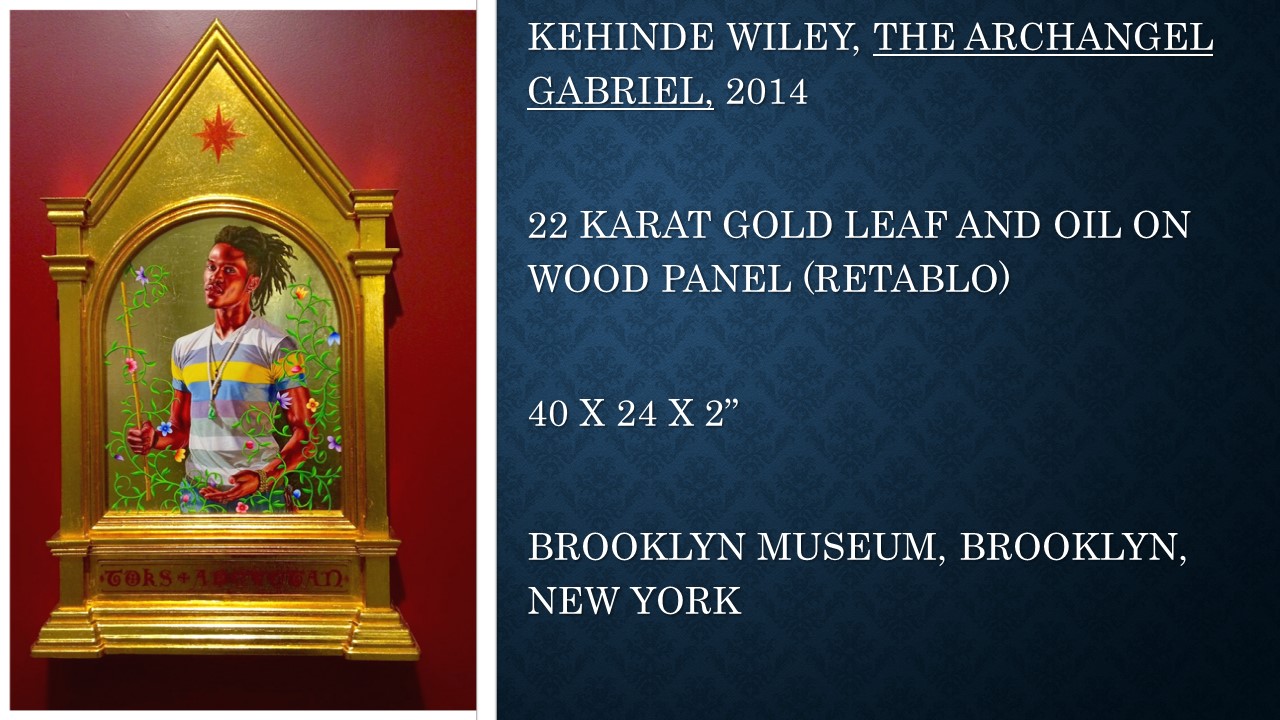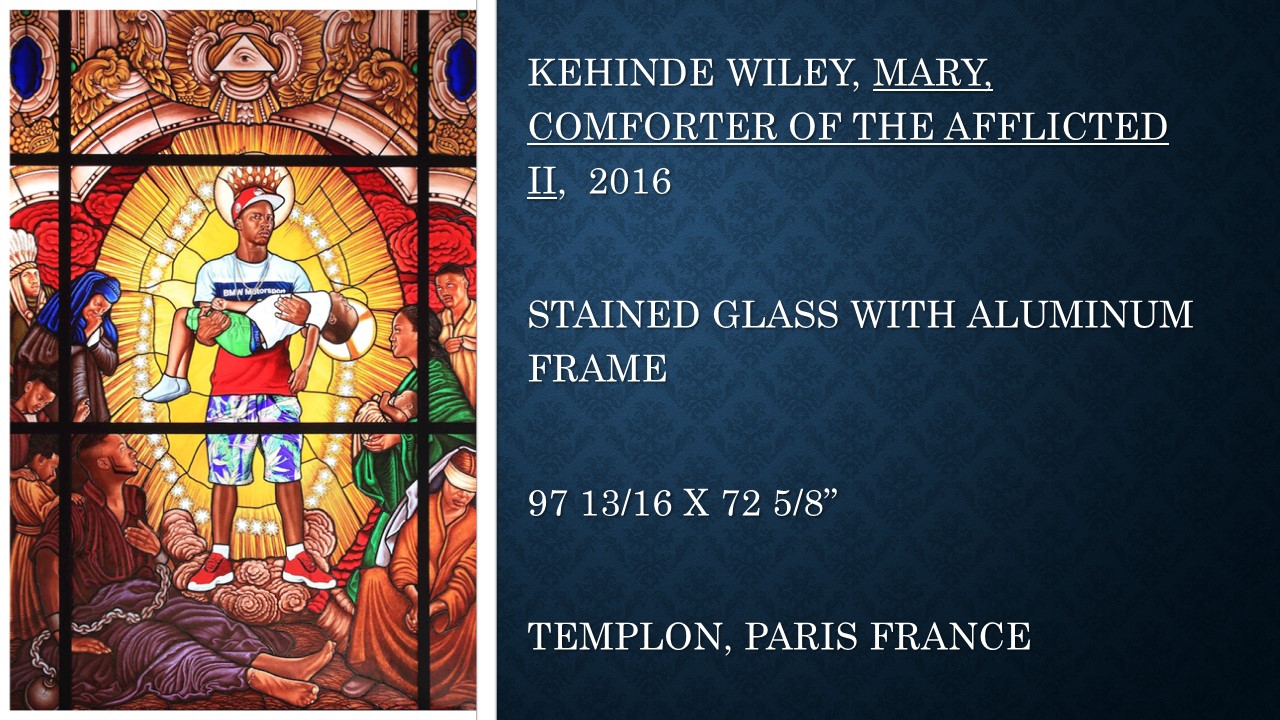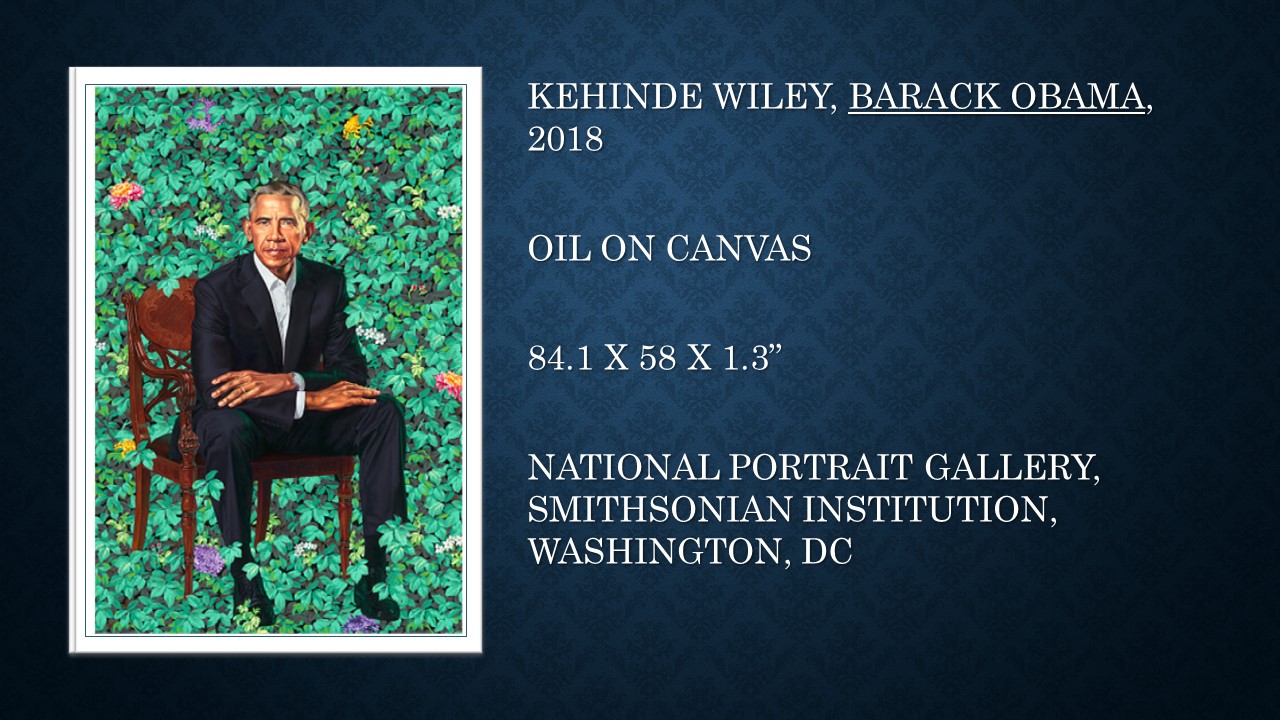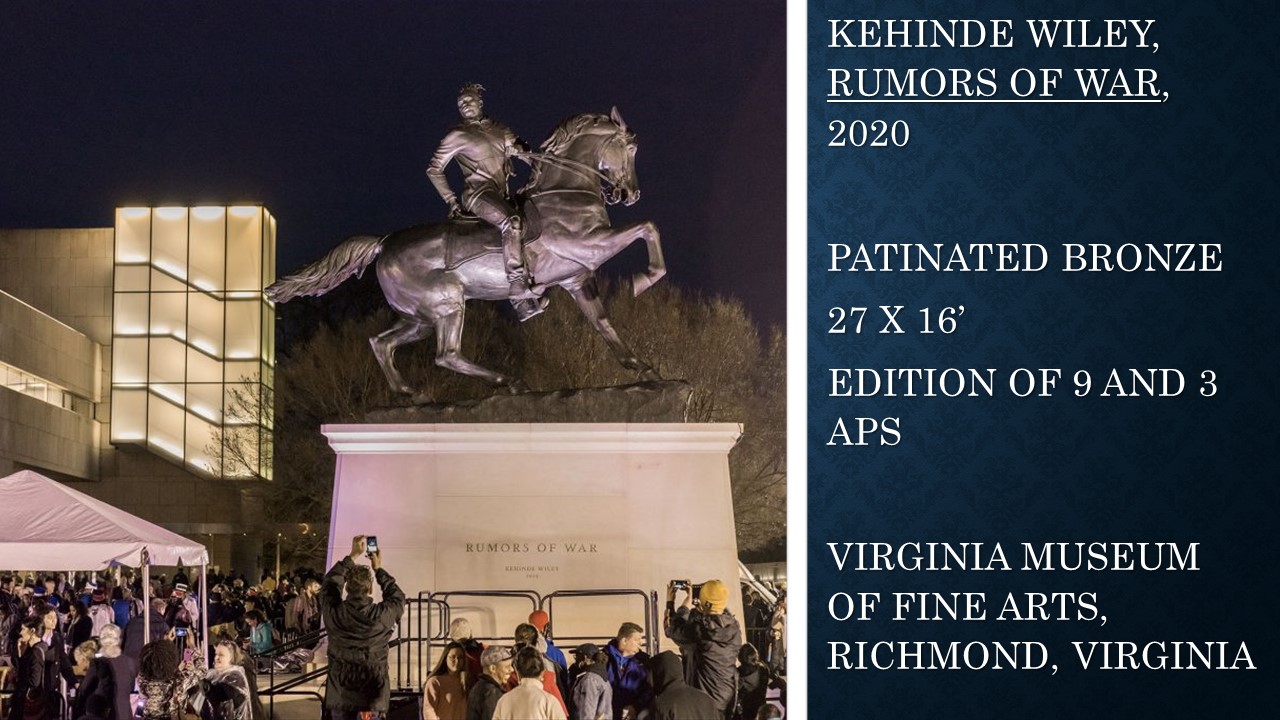Kehinde Wiley
Kehinde Wiley dedicated his life to studying the powerful, drawing inspiration from his studies of Western European art and its portrayal of the wealthy and influential. Armed with this knowledge of how to depict power, Wiley set out on the streets of the world to find black men and women that he could portray as influential people—to illustrate that powerful people come in all colors. He encouraged his models to study art books and find poses of power that appealed to them. He then posed and photographed them in their everyday clothes. Wiley explains, “In these toxic times, art can help us transform and give us a sense of purpose. This story begins with my seeing the Confederate monuments. What does it feel like if you are black and walking beneath this? We come from a beautiful, fractured situation. Let’s take these fractured pieces and put them back together.”
In the painting Officer of the Hussars, we see the heroic heterosexual masculinity found in Old Masters’ works that represented the male domination over nature and women. Judith and Holofernes address timeless issues of gender, race, violence, oppression, and social power. The size of these portraits is no accident; they are enormous and designed to envelop the viewer. Even the angle of their heads forces the viewer to physically look up into the paintings.
Wiley, an oil painter, pushed his boundaries to include stained glass portraits, like Mary, Comforter of the Afflicted II, and painting gold leaf retablos like The Archangel Gabriel. Wiley says about this series, “The resplendent light coming out of that stained glass is not about nationhood, it’s not about race. It’s about being powerful in the world, glowing literally. And if art can be at the service of anything, it’s about letting us see a state of grace for those people who rarely get to be seen that way.” Sleep is a remarkable painting using light across the body reminiscent of Rapture.
Wiley expanded his boundaries, again, to include bronze sculpture. The bronze bust named Bound represents an early Wiley signifier of bounded hair used as a strength unifier. They placed the bronze sculpture, Rumors of War, outside the Virginia Museum of Fine Art at the head of Arthur Ashe Boulevard near Monument Avenue, where they removed a slew of confederate monuments.
At the 2022 Venice Biennale, Wiley presented An Archeology of Silence. Entombment, after Titan 1559, and The Body of the Dead Christ in the Tomb. All sculptures and paintings represented the vulnerable and the radical grief we have all experienced. It shows the resilience, survival, and persistence that black people continue to exhibit as they come back repeatedly with style and grace. There have been so many hurdles generationally and with improvised solutions. There is a sense of street casting using chance, the present moment, and the American street. We are finding a bit of light at the end of the long, dark tunnel.
In most of Wiley’s portraits we see the same super ego of the superman found in most people—all reaching for the same heights. With the Barack Obama portrait, we find a humble man leaning down to the people and relatable to all. Kehinde Wiley is the first black artist to paint the first black president.
Wiley has created his own artist in residency program in Senegal named Black Rock where he encourages artists to paint outside western context.
More work can be seen at the Kehinde Wiley Studio, Sean Kelly Gallery and Stephen Friedman Gallery.
PLEASE SEE PORTFOLIO BELOW
















